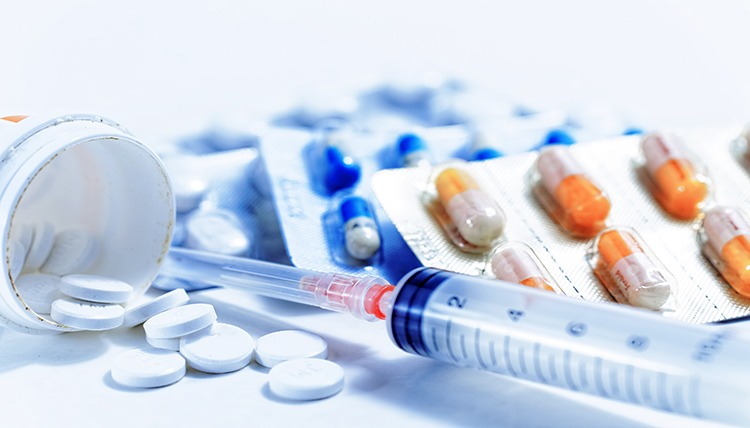Bio/Pharma R&D Stayed Robust Despite the Pandemic
Despite significant disruption and reprioritization of clinical trial activity during 2020 due to COVID-19, R&D activity levels remained at historically high levels, driven by new funding and strategic transactions, especially within oncology, according to a recent IQVIA report. What do the numbers show?
Inside bio/pharma R&D
The numbers show a recovery with increased clinical trial activity and increased funding for early- and late-stage R&D activity, according to the report, Global Trends in R&D: Overview Through 2020 ,by the IQVIA Institute for Human Data Science. Highlights from the report show that funding for early- and late-stage R&D and strategic transactions increased significantly in 2020; aggregate R&D spend for the top 15 companies reached a record high. The number of first-time launches of novel active substances reached an all-time high of 66 globally in 2020, which included treatments in oncology and rare diseases. Clinical trial starts increased 8% in 2020, similar to growth to the prior three years, with oncology trial starts reaching historically high levels. Overall, clinical-trial activity recovered from the pandemic in mid-year 2020 to levels above 2019 even without COVID-19 trials.
“The growth in research and development driven by new oncology drugs, new funding and strategic investments is a testament to the resilience and strength of the innovative, global biopharmaceutical industry,” said Murray Aitken, Executive Director of the IQVIA Institute for Human Data Science, in commenting on the report. “Faced with significant disruptions and the need to reprioritize research and development, the global life sciences industry has demonstrated its ability to meet and even exceed expectations for new and better lifesaving therapies and vaccines.”
|
|
A further breakdown
Although clinical development productivity remains at historically low levels, there were several positive indicators in 2020, including resumption of clinical trial activity following a pause due to COVID-19, pipeline expansion, increased R&D funding and strategic transactions, and an increase in new drug approvals and launches. Key highlights are outlined below.
Clinical development productivity. Clinical development productivity increased slightly in 2020 but remains at historically low levels because of rising trial durations, complexity of disease targets and their associated trial protocol designs, and declining success rates, according to the IQVIA report. Productivity, however did rise slightly in 2020, as complexity metrics, including the numbers of sites and countries included in trials decreased significantly, related to COVID-19 disruptions. The composite success rate across all therapy areas rose slightly to 9.8% in 2020, up from 2019 but still lower than the 10-year average of 12.9%. Each of the productivity elements vary substantially across diseases, with success rates ranging from a high of 32% for rare drugs to less than 10% for vaccines, endocrinology, neurology, and cardiovascular drugs, according to the IQVIA study. The report says efforts across the industry to increase productivity by expanding the use of data- and evidence-based approaches to improve clinical trial design and speed execution are expected to yield improvements over time.
Clinical trial starts. Overall, clinical trial starts increased 8% in 2020, similar growth to the prior three years and which included a rapid recovery to pre-COVID-19 levels from mid-year 2020. Remote, virtual or decentralized trials increased dramatically in 2020, especially, in trials related to COVID-19, and contributed to the speed of development and authorization of vaccines and treatments. Oncology trial starts in 2020 reached historically high levels, 60% more than were started in 2015, reflecting strong momentum in this area and especially in rare oncology indications, which now account for 63% of total oncology trials, according to the IQVIA report. New trial starts in other therapy areas, excluding infectious diseases, fell in 2020 below 2019 levels, but in most areas (except respiratory), clinical trial starts have increased over the past decade, according to the report.
R&D pipeline. Growth in the industry’s late-stage pipeline continued in 2020 to bring total expansion to 43% since 2015. Oncology drugs reached record high numbers. Growth, however, in the early-stage pipeline, including biotherapeutics, paused in 2020. There are more than 5,700 drugs in the industry’s early-stage pipeline and over 3,200 in the late-stage pipeline, according to the IQVIA report, and while growth in the early-stage pipeline paused in 2020, the late-stage pipeline grew modestly. Total early-stage pipeline products declined by 13% in 2020, the first reduction since 2014, bringing the number of total products back to 2018 levels. In the late-stage pipeline, the number of products increased by 3% to bring the total expansion of the industry’s pipeline to 43% since 2015. Oncology drugs reached record high shares with more than than 40% of the early-stage and more than 30% of the late-stage pipeline. Half of the late-phase oncology pipeline is for rare cancers.
R&D funding and strategic transactions. Funding for early- and late-stage R&D increased significantly in 2020, according to the IQVIA analysis, seemingly unaffected by the disruptions of the COVID-19 pandemic with mergers and acquisitions, licensing deals, and other forms of collaboration proceeding at typical levels. Aggregate R&D expenditures by the 15 companies with the highest pharmaceutical sales reached $123 billion in 2020, according to the IQVIA report, and exceeded 20% of sales for the first time while venture capital flows into the life sciences rose by 50% in 2020 over 2019 levels as interest and valuations in early-stage companies remained at all-time highs.
New drug approvals and launches. In 2020, a record 66 novel active substances were approved and/or launched globally. In the US, the Food and Drug Administration’s Center for Drug Evaluation and Research approved 53 new molecular entities (NMEs), which surpassed the 48 NMEs approved in 2019 and which was the second highest level of NMEs approved in the past decade, except for 2018 when 59 NMEs were approved.
Pharma Industry Outlook at Virtual DCAT Week
Virtual DCAT Week, organized by the Drug, Chemical & Associated Technologies Association (DCAT), will be held July 12 to July 16, 2021, and will feature a presentation by Graham Lewis, Vice President, Global Pharma Strategy, IQVIA, on the latest market data and analysis on bio/pharmaceutical industry performance, including growth prospects in therapeutic segments and developed and emerging markets. The 1-hr webinar is one of five education programs at Virtual DCAT Week and are exclusive to DCAT member companies. Further information on the Pharma Industry Outlook program may be found here, and the full schedule of programs may be found here. Other programs feature executives from Pfizer, J&J, and Gilead Sciences to provide insights on the development and manufacturing/supply of their respective COVID-19 vaccines (Pfizer and J&J) and small-molecule COVID-19 drug (Gilead Sciences) and lessons learned instructive for the industry. Plus, Dr. Jennifer Doudna, Nobel Laureate in Chemistry (2020), will provide a Special Keynote Address on her contribution to CRISPR-Cas9 genome-editing technology and its impact on drug development.







